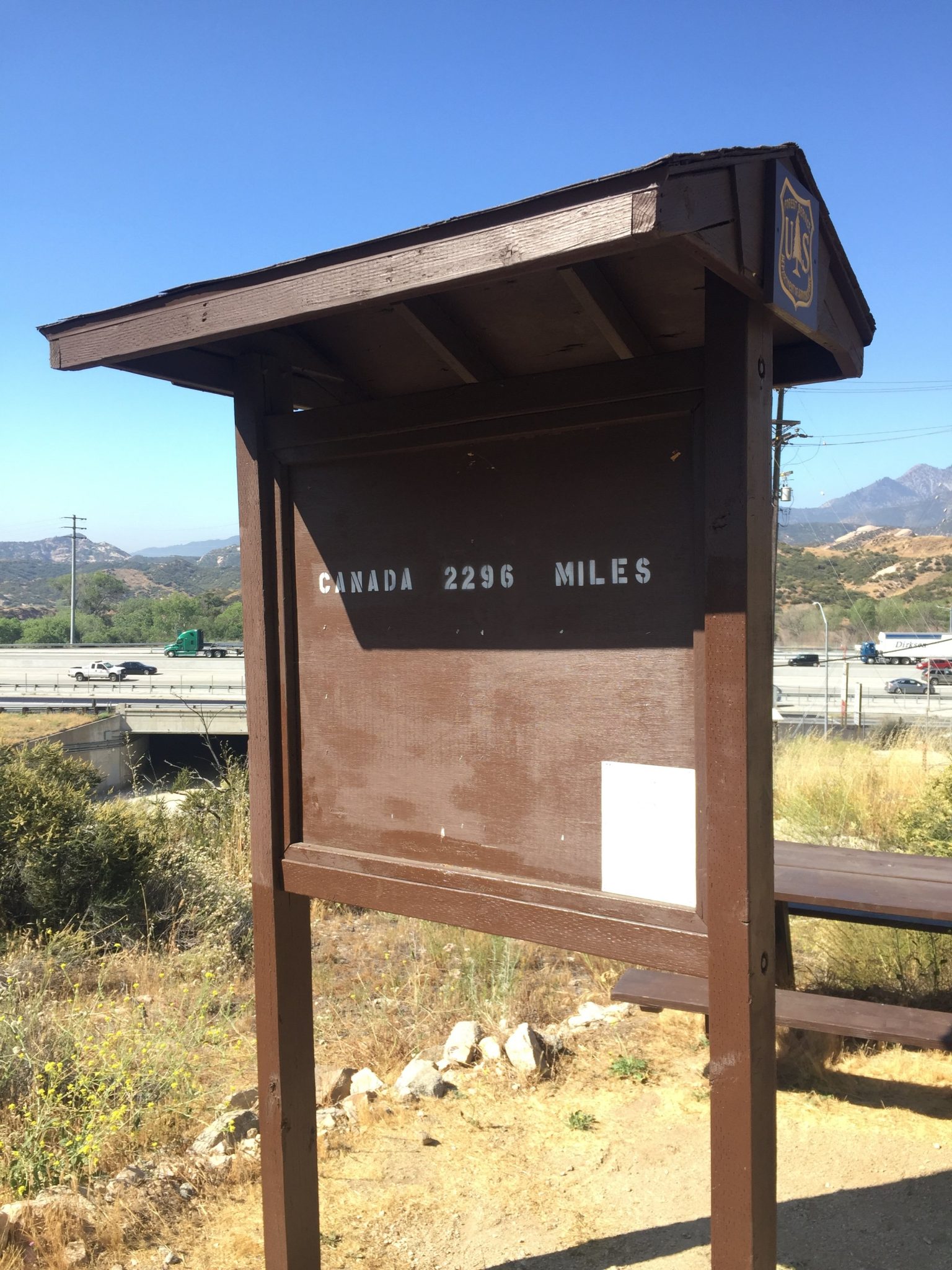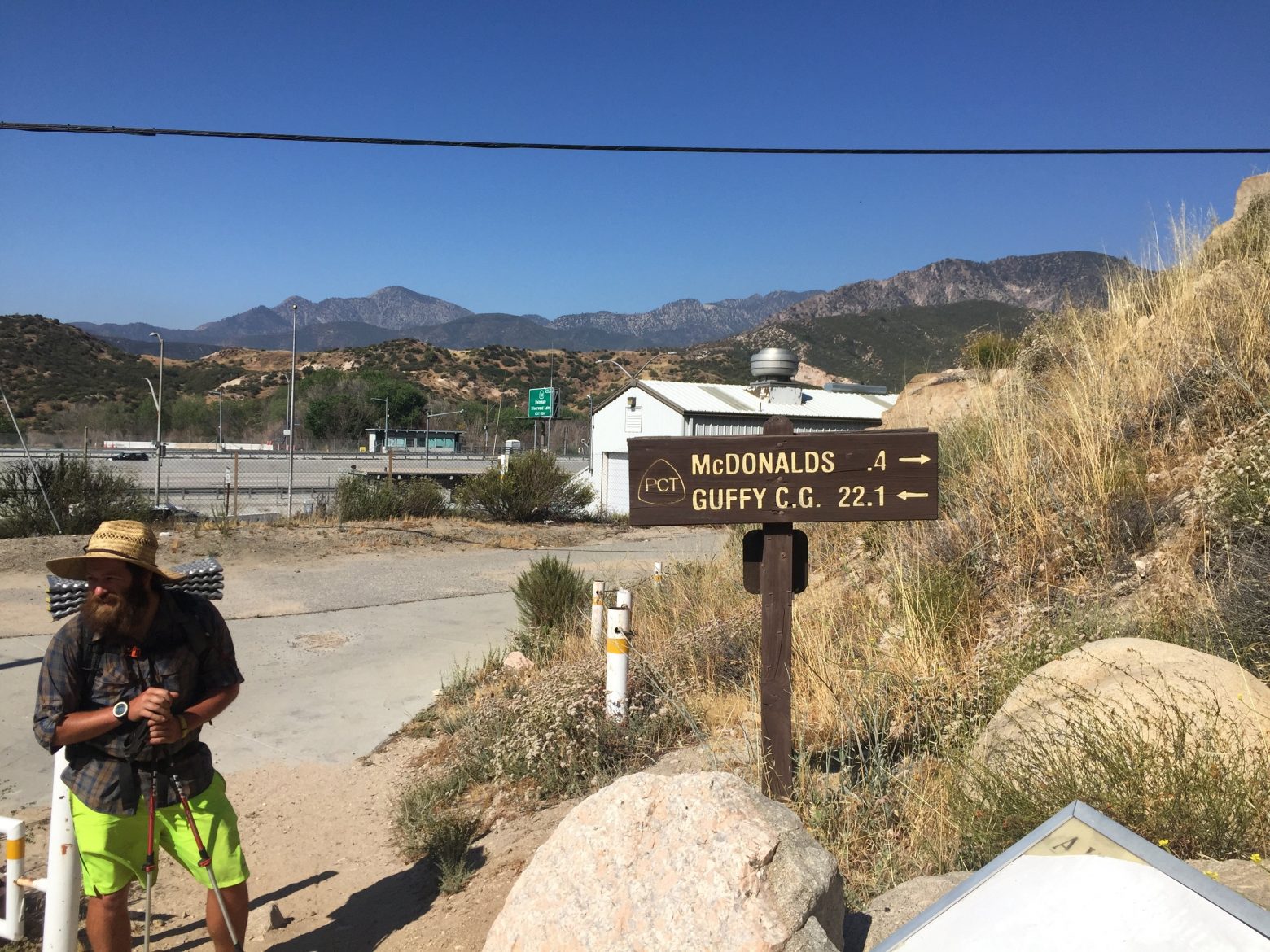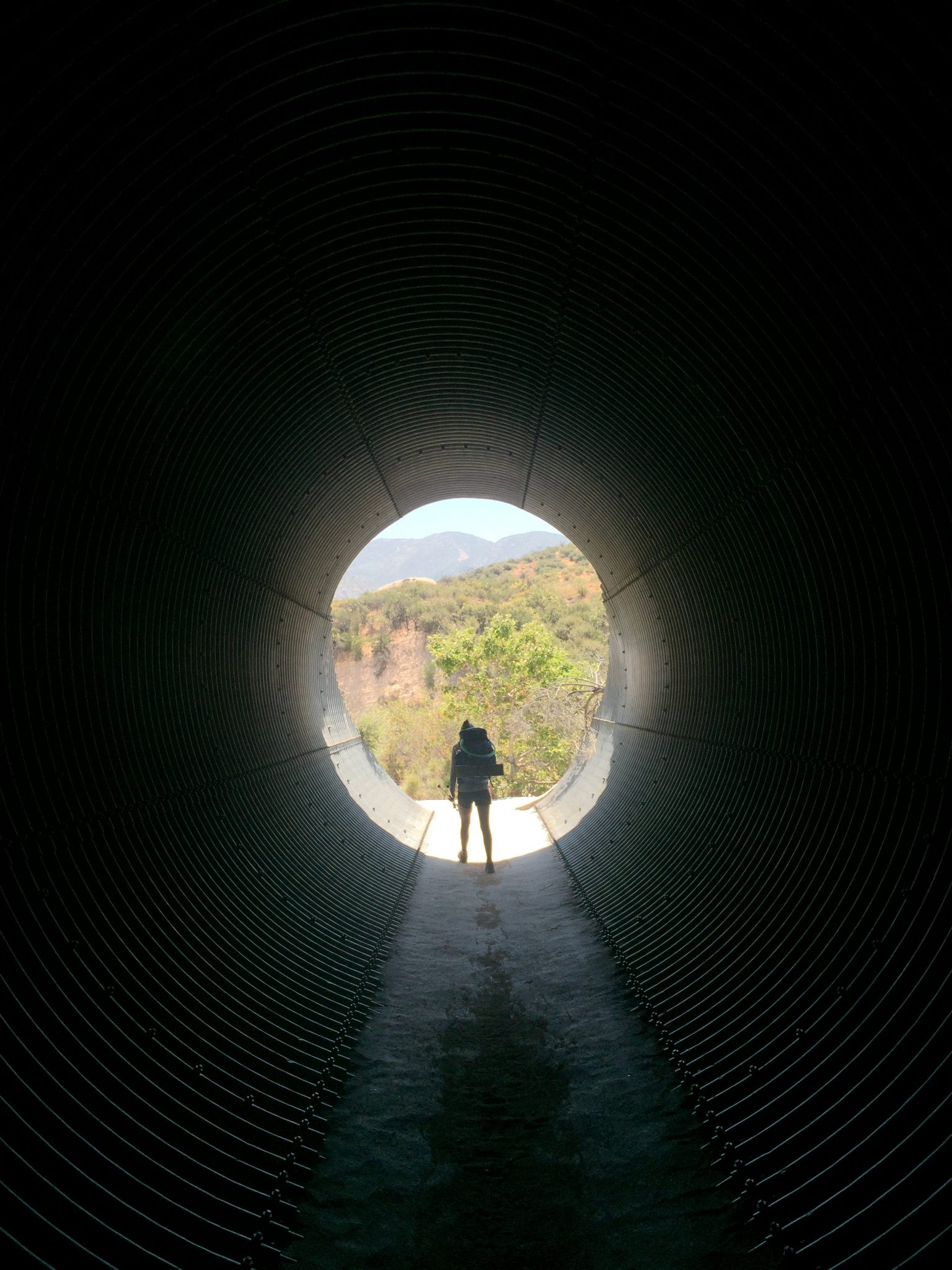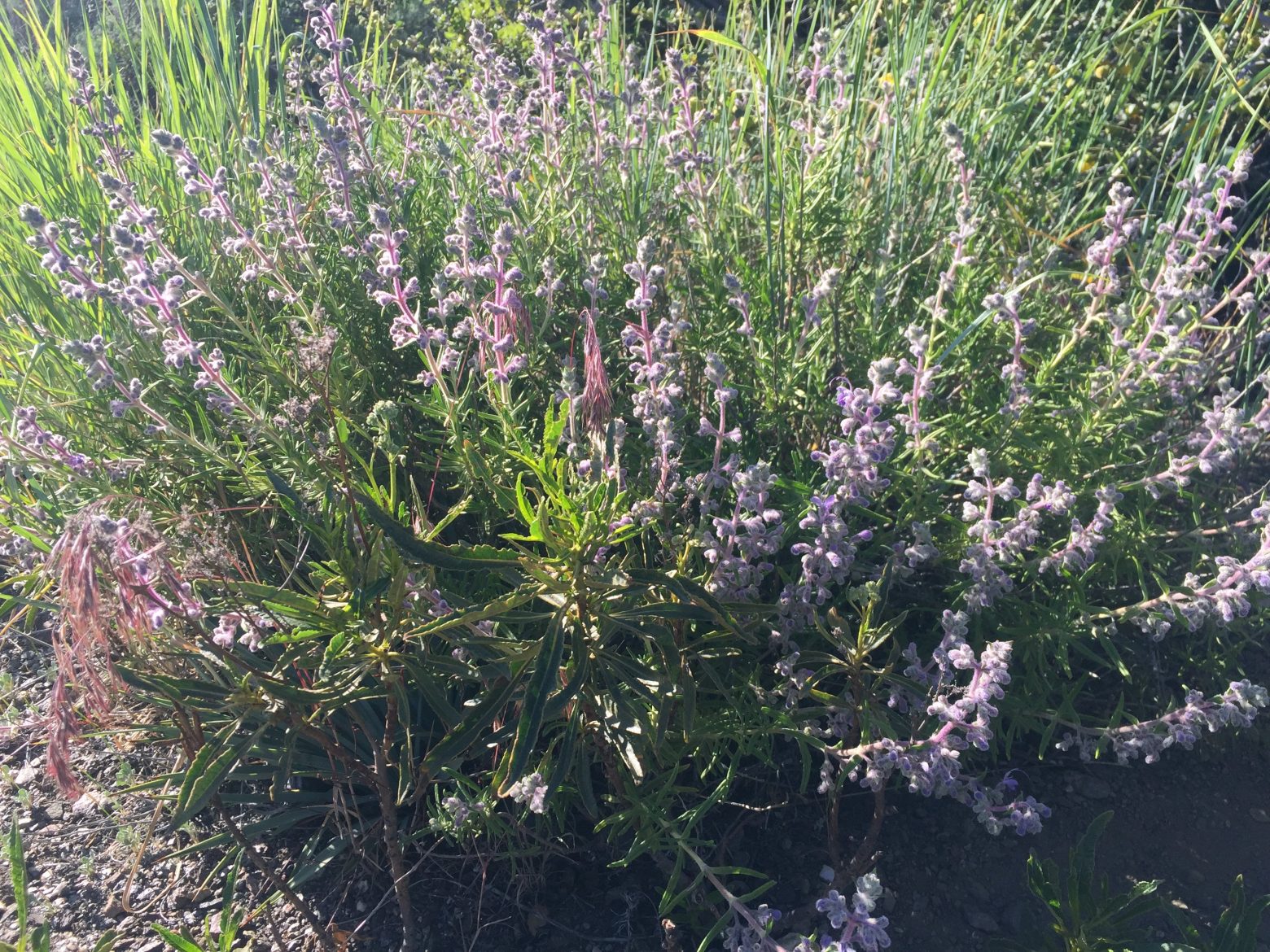Date: 5/19/16
Miles: 25.0
Total Miles: 357.3
1 liter of water = 1 kilogram = 2.2 pounds
It's an inescapable scientific truism, and one we would be cruelly reminded of today. But I'm getting a bit ahead of myself, so let's rewind to the morning. After cruising down 10 miles of descending trail by 9:30am, we reached the crossing of Interstate 15 at Cajon Pass.

Just before the Interstate, there was a small sign reminding us of just how far we still have to go—a mere 2,296 miles. Before crossing, we made a small but important detour by turning right up a half mile stretch of what once was the famous Route 66 and is now merely an unused frontage road alongside I-15. Up this frontage road is a McDonald's, which may as well be a hiker oasis. The promise of salty, fatty food that might otherwise be off-putting at home had driven our legs for over a day.


Proton almost didn't make it....

It turns out that this McDonald's is actually a pretty critical resupply point since it's the last water for 28 miles of trail. So in addition to an outrageous display of food consumption that took place, we also packed out 6 liters of water each. Between the four of us our table looked like we could stock a small water cache.

Which brings me back to how heavy water is. With 6 liters walking out of McDonald's and into the heat of the afternoon for a 28-mile waterless stretch of trail that began with a 5,000 foot ascent into the San Gabriel Mountains, I was carrying 13.2 pounds of water. Aside from food, that's just shy of 50% more than the sum total of everything else in my pack. Put another way, I had added your average bowling ball to my pack for the afternoon. And so, with heavy packs, we set off under I-15 and up into the mountains once more.





Not even the occasional breeze could prevent me from being soaked with sweat, and it was amazing how much pain the extra weight had added to my feet by day's end. As grueling as it was, being my longest day on the trail to boot, there was the usual beauty all around. In the lower portion of the climb, just before crossing the San Andreas fault, the trail was awash with color, painted in alternating swatches of red, orange, and white sand.

Late in the day, we came across our first encounter with the dreaded Poodle Dog bush. Silly in name it may be, but Poodle Dog bush contains an irritant similar to poison oak, though much worse, that can cause extreme cases of contact dermatitis some of which have required hospitalization of hikers in past years. It's beautiful flowers belie its danger, and as a first growth species, it has proliferated on these very slopes where a wildfire burned several years ago.

In the final hours of the climb as I stared at the ground beneath my feet and ahead of me, I realized how different these desert mountains are from the northeastern mountains of my youth. Not timeless granite monoliths, the mountains of the desert are more like a snowball made from too-dry snow. Without moisture to hold the soil together, they give the impression that they could be quickly reshaped by a hard rain or wind, and the trail along with it. Not quite sand dunes, but a distant cousin to them.
